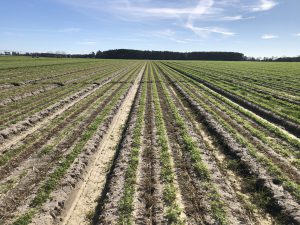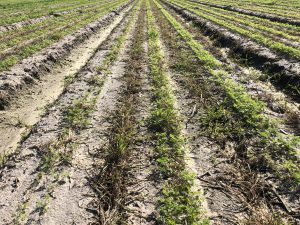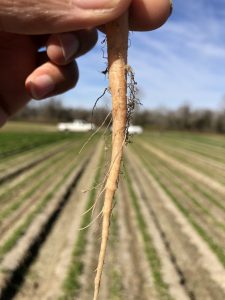- Determine the nematode genus (type) and their number in soil by analyzing the soil samples at a Nematode Diagnostic laboratory. For root-knot nematodes, the damage threshold is 0nly 1 nematode per 100 cc of soil. The nematicide rate for nematode control may vary based upon the nematode pressure in the soil.
- Identify the application rate, application depth, and time intervals before planting. This information can be found on nematicide label directions and should be followed carefully before applying fumigants.
- Know how to calibrate an applicator to correctly deliver the recommended rate.
- Know the environmental and soil conditions (soil temperature, soil moisture, rainfall, and wind speed) before fumigation. Chemical fumigants should not be applied if heavy rainfall is forecast to occur within 48-72 hours.
Here is an example of a carrot field (approximately 100 acre) with significant damage by nematodes. The field was fumigated with Telone II at 12 gal/acre before seeding. Photos show severe stunting of the carrot plants 3 months after seeding. Note the small galls (swelling) on the tap and feeding roots due to infection with southern root-knot nematode (M. incognita). It is believed that the field had a high pressure of nematode infestation prior to fumigation and also the fumigant application was not performed properly as specified above.


